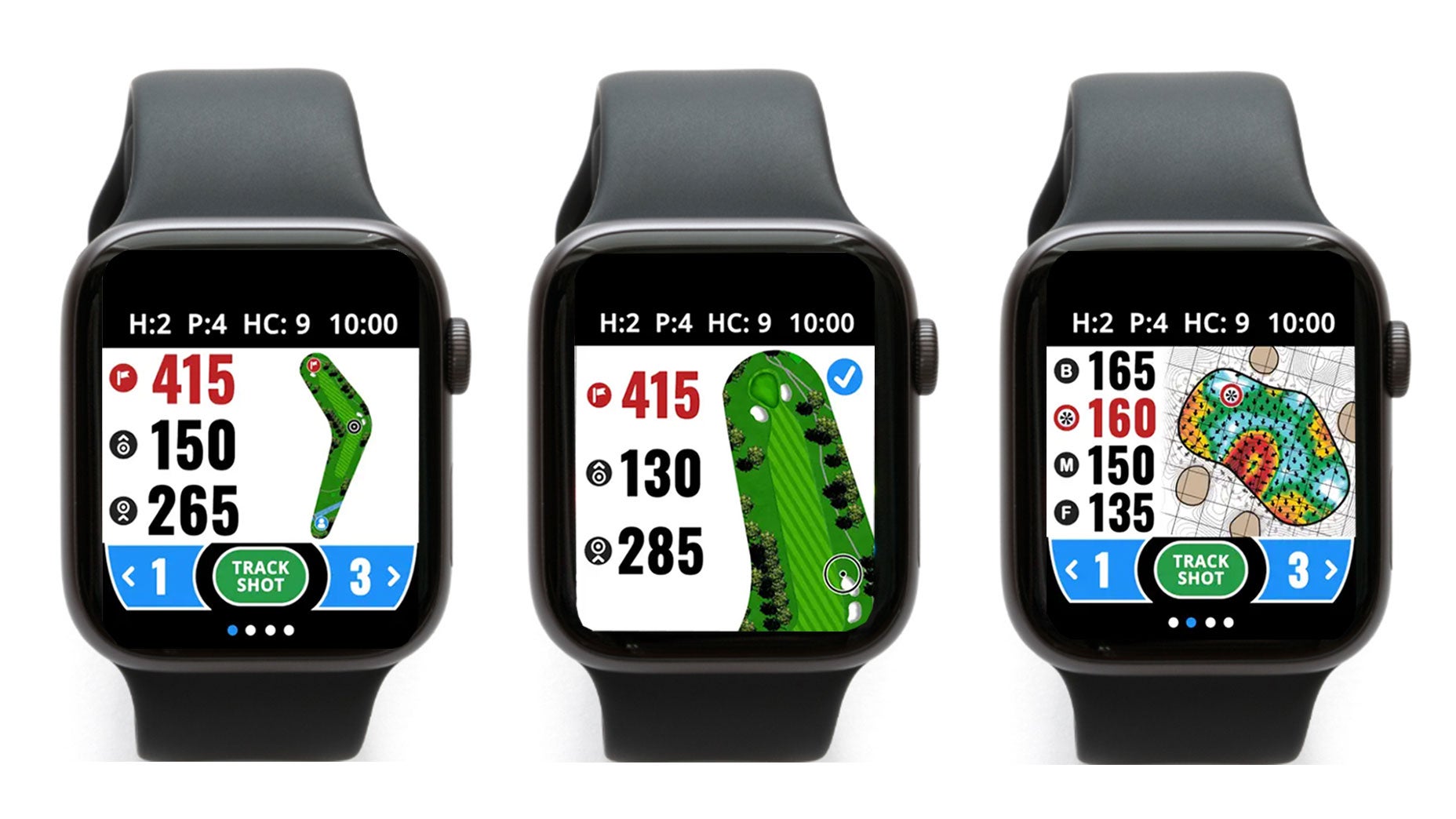As someone you might call “tech-allergic,” I have long looked to the golf course as a refuge from the chirps and beeps and screens that dominate the rhythms of our day-to-day. When I play the game, I prefer to unplug. So it struck me as ironic when I was asked to test a product designed for golfers who enjoy the whiz-bang extras of the modern age.
Founded in 1999 as a handheld GPS system, GolfLogix, which is owned by GOLF.com’s parent company, has evolved into one of the game’s most downloaded apps for golf statistics and analytics, offering not just personalized data but also detailed course maps to help you plot out every shot. Time was when its intel was accessible only through your cell phone. But no longer. Updates to GolfLogix have made it compatible with the Apple Watch.
As the resident Luddite in the office, I was chosen as a guinea pig.
“Give us your first impressions,” my editor said.
My first impression was that I was not the right guy for the assignment, because, well, I don’t own an Apple Watch. My wife does, though, and borrowing hers was easy enough. So was downloading GolfLogix onto it. A few swipes and clicks and I was good to go. Contained in the app’s digital database are detailed 3D maps of more than 35,000 courses, including my hometown muni in Oakland, Calif. Off I went to take my new tech for a spin.
Standing on the 1st tee of a course I’ve played more times than I can count, I had a pretty good idea what I was in for: a 540-yard, dogleg right par-5, with a cluster of bunkers at the inside bend of its elbow. My watch confirmed that. It said other things as well, providing me with info that I’d never thought to gather. Those bunkers, for instance, started at 242 yards away. To carry them required another 31 yards to a mostly flat fairway whose edges sloped slightly toward the rough.
Like a lot of gizmos these days, GolfLogix gives you distances to every target and hazard, measured faithfully by GPS. But the app doesn’t work strictly by the numbers. It paints vivid pictures, too, showing every hole from various perspectives, including aerial images that capture slope and elevation across every inch of the course. These images are particularly impressive on the greens, where color-coded heat maps, marked arrows, tell you how much and which way the ground is moving. You can even rotate the image so the map of the green aligns with your perspective, and then draw a line that shows precisely how your putt will break.
As I see it, information of this kind is not critically important when you’re playing your home course. But it doesn’t hurt. And it sure comes in handy when you’re pegging it on unfamiliar grounds, where there’s almost no such thing as TMI.
More compelling to me still, though, was a different kind of data. For as much as it tells you about the course you’re playing, GolfLogix also educates you about yourself. In addition to allowing you to tally up your stats (fairways hit, greens in regulation, putts, etc.), the app has a “shot tracker” function, which does just what its name suggests. Activate it after any shot, and it shows precisely how far you hit it. Over time, this feedback gives you a faithful portrait of how you actually play the game, not how you think you play it.
It leaves no room for self-delusion. Like a lot of golfers, I’m guilty of that. Somehow, I’ve convinced myself that I can fly my 7-iron 165 yards. I cannot; 155 yards is more like it. Nor do my best drives carry beyond 240, as I’ve led myself to believe. One round with GolfLogix on my wrist confronted me with these cold, hard truths. There was no ignoring them. From this point on, I plan to use those lessons to refine my club selection and course strategy. Who knows? I might even shoot lower scores.
In golf, as in other areas of life, technology can backfire. Innovations that promise to simplify the game for us can wind up complicating it instead. Time and again I’ve seen this from tech-happy playing partners as they fumble with their phones, searching for this or that piece of info on an app that may or may not pay dividends. The most common result I’ve noticed is slower pace of play.
With the app on an Apple Watch, I dealt with none of that. Gathering info was as quick and easy as checking the time. Navigating was straightforward, too. Switching from one hole to the next, or from one function to another, requires nothing more than the swipe of a finger.
My GolfLogix test run cost me nothing. When you download the app, you get two free trial rounds. After that, you can continue using the app for free, with access to basic features, such as 3D course maps, score and stat tracking, and the opportunity to compete with friends. The other option is an annual membership ($59.99), which provides unlimited access to all the upgraded features, including slope and elevation-adjusted distances, putting alignment and 3D approach views to pinpoint the best place to land your ball.
Old habits die hard, and I still value golf as a tech-free escape. But after playing a round with an all-knowing caddie on my wrist, I appreciate the value of having such a brainy sidekick. Now, if only I can convince my wife to give me her Apple Watch.
You can download GolfLogix for your Apple Watch in the App Store.
